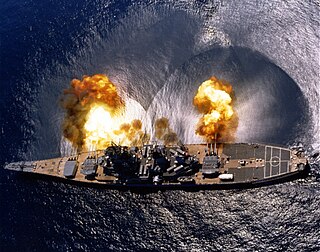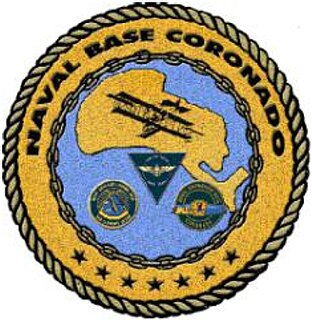
A battalion is a military unit. The use of the term "battalion" varies by nationality and branch of service. Typically a battalion consists of 300 to 800 soldiers and is divided into a number of companies. A battalion is typically commanded by a lieutenant colonel. In some countries, the word "battalion" is associated with the infantry.

A military artillery observer,spotter or FO is responsible for directing artillery and mortar fire onto a target and may be a Forward Air Controller (FAC) for close air support and spotter for naval gunfire support. Also known as Fire Support Specialist or FISTer, an artillery observer usually accompanies a tank or infantry manoeuvre unit. Spotters ensure that indirect fire hits targets which the troops at the fire support base cannot see.

The I Marine Expeditionary Force is a Marine Air Ground Task Force (MAGTF) of the United States Marine Corps primarily composed of the 1st Marine Division, 3rd Marine Aircraft Wing, and 1st Marine Logistics Group. It is based at Marine Corps Base Camp Pendleton.
Oceanview was a U.S. Marine Air Naval Gunfire Liaison Company (ANGLICO) observation post located on the coast some 10 km north of the Cua Viet River and just south of the Vietnamese Demilitarized Zone (DMZ). It was a very isolated spot and could be reached only by Amtrac or helicopter.

Marines, also known as naval infantry, are typically an infantry force that specializes in the support of naval and army operations at sea and on land and air, as well as the execution of their own operations. In many countries, the marines are an integral part of that state's navy. In others, it is a separate organization altogether, such as in the United States, where the Marine Corps falls under the US Department of the Navy, yet it operates independently. Marines can also fall under a country's army like the Troupes de marine and Givati Brigade.
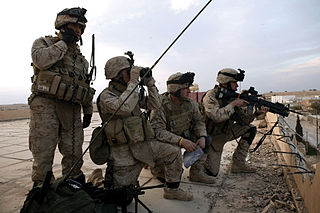
Air Naval Gunfire Liaison Companies (ANGLICO) are airborne fire support and liaison units of the United States Marine Corps. The mission of ANGLICO is "To provide Marine Air-Ground Task Force (MAGTF) Commanders a liaison capability to plan, coordinate, and conduct terminal control of fires in support of joint, allied, and coalition forces." Per this mission statement, ANGLICOs are not designed to support U.S. Marine Corps maneuver elements. Instead, the doctrinal purpose of ANGLICO is to provide fire support and coordination in support of units adjacent to the MAGTF.

The II Marine Expeditionary Force is a Marine Air-Ground Task Force consisting of ground, air and logistics forces capable of projecting offensive combat power ashore while sustaining itself in combat without external assistance for a period of 60 days. The II Marine Expeditionary Force is commanded by a Lieutenant General, who serves under U.S. Marine Corps Forces Command, providing Marine fighting formations and units to European Command, Central Command and Southern Command.
Marine Air-Ground Task Force is a term used by the United States Marine Corps to describe the principal organization for all missions across the range of military operations. MAGTFs are a balanced air-ground, combined arms task organization of Marine Corps forces under a single commander that is structured to accomplish a specific mission. The MAGTF was formalized by the publishing of Marine Corps Order 3120.3 in December 1963 "The Marine Corps in the National Defense, MCDP 1-0". It stated:
148 (Meiktila) Commando Forward Observation Battery is a specialist Naval Gunfire Support Forward Observation (NGSFO) unit within 29 Commando Regiment Royal Artillery of 3 Commando Brigade Royal Marines.
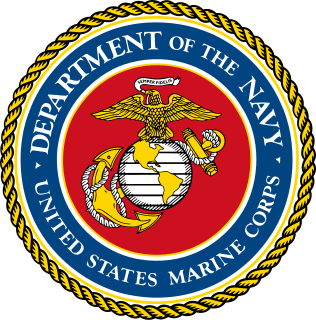
The United States Fleet Marine Forces (FMF) are combined general and special purpose forces within the United States Department of the Navy that perform offensive amphibious or expeditionary warfare and defensive maritime employment. The Fleet Marine Forces provide the National Command Authority (NCA) with a responsive force that can conduct operations in any spectrum of conflict around the globe.

The United States Marine Corps is organized within the Department of the Navy, which is led by the Secretary of the Navy (SECNAV). The most senior Marine commissioned officer is the Commandant of the Marine Corps, responsible for organizing, recruiting, training, and equipping the Marine Corps so that it is ready for operation under the command of the unified combatant commanders. The Marine Corps is organized into four principal subdivisions: Headquarters Marine Corps, the Operating Forces, the Supporting Establishment, and the Marine Forces Reserve.
In the United States Marine Corps, the ground combat element (GCE) is the land force of a Marine Air-Ground Task Force (MAGTF). It provides power projection and force for the MAGTF.
The Fleet Landing Exercises, or FLEX were amphibious landing exercises conducted by the United States Navy and United States Marine Corps between 1935 and 1941. The purpose of these exercises was to formulate a workable amphibious warfare doctrine. The development of the necessary craft and other equipment, and the proper tactical deployment of them were also results. Finally, the exercises demonstrated the usefulness of a standing body of Marines, the Fleet Marine Force, specially prepared for amphibious expeditions.
The United States Marine Corps is assigned by the National Command Authority to be primarily the Department of Defense's expeditionary force-in-readiness, and the Department of the Navy's contingent landing force—amphibious by nature. Before 2006, the Marine Corps was the only branch of the Armed Forces that did not have any of its special warfare elements participating in the United States Special Operations Command (USSOCOM), due to confining its special operations capabilities only for the purpose to the Fleet Marine Force.
Surveillance, Reconnaissance, Intelligence Groups (SRIG) were intelligence units of the United States Marine Corps from 1988 to 1997. The SRIG command structure combined units of Radio Battalion, ANGLICO, Force Reconnaissance, remotely piloted aircraft, counterintelligence, and other intelligence elements of the Marine Air-Ground Task Force.
Forward observers in the U.S. military are artillery observers who carry the Military Occupational Specialty designator of 13F in the United States Army and 0861 in the United States Marine Corps. They are officially called Joint Fire Support Specialists in the U.S. Army and Fire Support Men in the U.S. Marine Corps. They are colloquially known as FiSTers, regardless of whether they are members of a FiST. The Battalion Fire Support Officer (FSO) is the Officer in Charge of a Battalion Fire Support Element.
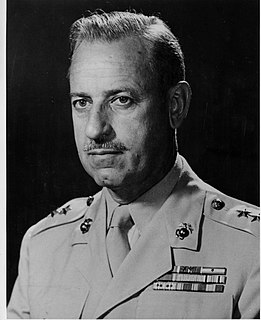
Donald McPherrin Weller was a decorated officer of the United States Marine Corps with the rank of Major General. He is most noted as pioneer of Naval gunfire support and author of many publications on this topic. Weller also commanded 3rd Marine Division and ended his career as Deputy Commander, Fleet Marine Force Pacific.

The Joint Assault Signal Company (JASCO) were joint service units that provided ship to shore, air to ground communications to coordinate and control Naval Gunfire and Close Air Support to the United States Army. They were composed of specially trained Marines, Sailors and Army officers and enlisted. The Army component was composed of Air Liaison Officers, modern day Forward Air Controllers and enlisted communications technicians. JASCOs were created in the Pacific because of communication clutter, too many small teams to be effective. After the costly invasion of Tarawa the need for centralized command and control of air and naval fire support, utilizing Navy, Marine or Army gunners, spotters and radiomen was seen. Based on the Guadacanal experience of Major General Alexander A. Vandergrift the Joint Assault Signal Companies were formed.


